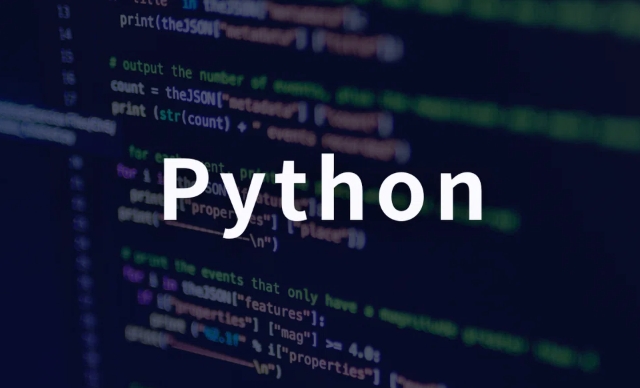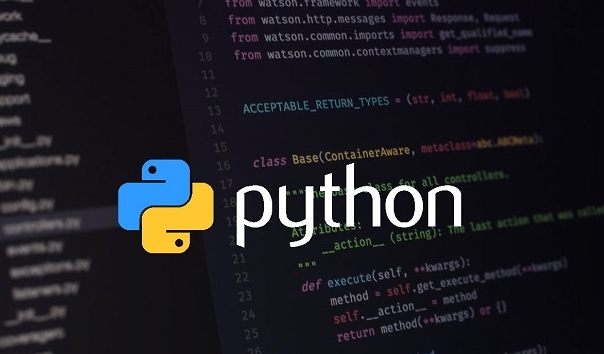 Backend Development
Backend Development
 Python Tutorial
Python Tutorial
 Multithreading vs. Multiprocessing: Choosing the Right Approach in Python
Multithreading vs. Multiprocessing: Choosing the Right Approach in Python
Multithreading vs. Multiprocessing: Choosing the Right Approach in Python
Jul 08, 2025 am 02:48 AMThe choice of concurrency processing in Python depends on the task type. ① Multithreading is suitable for I/O-intensive tasks, such as network requests, file reading and writing, and is implemented through threading or ThreadPoolExecutor; ② Multiprocessing is suitable for CPU-intensive tasks, such as image processing, and multi-core performance can be achieved using multiprocessing or ProcessPoolExecutor; ③ Whether the criterion is whether the program bottleneck is CPU or I/O, priority is given to choosing according to the characteristics of the task to improve efficiency.

Python provides two main concurrency processing methods: multithreading and multiprocessing. Many people will be confused about which one to use when writing programs. In fact, the key lies in what problems you want to solve. If your task is I/O intensive, such as network requests, file reading and writing, then multi-threading is usually enough; if it is CPU intensive, such as image processing and large-scale computing, it is more suitable for multi-processing.

What is suitable for multi-threading?
Multithreading is mainly used in Python to improve the efficiency of I/O-intensive tasks. Although there is a GIL (global interpreter lock) that limits that only one thread can execute Python bytecode at the same time, because I/O operations will release GIL, multiple threads can alternately run while waiting for I/O to improve overall efficiency.

For example, if you download 10 pictures from the Internet, if you download them in serial, each picture takes 1 second, which takes 10 seconds in total; and with multi-threading, it may only take a little more than 1 second to complete. This is the benefit of concurrency.
Common usage scenarios include:

- Web crawler
- Read and write files
- User interface response (avoiding lag)
It is recommended to use threading module to implement it, or a more advanced concurrent.futures.ThreadPoolExecutor , the code is simple and easy to manage.
What problems can multi-process solve?
When you need to really use multi-core CPUs for parallel computing, multi-processes are the first choice. It bypasses GIL's limitations, and each process has an independent Python interpreter and memory space, which can execute tasks in parallel.
For example, if you are doing tasks such as data cleaning, machine learning model training, or video transcoding, these are all CPU-intensive. At this time, multi-processes can better exert hardware performance than multi-threads.
It should be noted that the communication cost between processes is higher than that between threads and consumes more resources. You can use the multiprocessing module to create processes, or use concurrent.futures.ProcessPoolExecutor to simplify management.
Tips:
- If your task can be split into multiple independent subtasks, it is very suitable for multi-process.
- Data sharing between processes can be shared using
QueueorManagerobjects.
How to choose? Depend on the task type!
The judgment criteria are actually very simple: depends on whether your bottleneck is in CPU or I/O.
If your program is waiting for external responses most of the time (such as waiting for API return or disk read), then use multi-threading; if you are doing operations most of the time, then use multi-processing.
In addition, code complexity and resource overhead must be considered. Multi-threading is lightweight, fast startup, suitable for simple concurrency; multiple processes are heavier, but can be truly parallel.
To give a comparison example:
- A web crawler → multi-threading is more suitable
- A batch processing of an image recognition model → Multi-process better
Basically that's it. Which method to choose depends on the characteristics of the task itself and your performance needs. A point that is not complicated but easy to ignore is: don’t concurrency for the sake of concurrency, first figure out where the bottleneck is, and then decide which method to use.
The above is the detailed content of Multithreading vs. Multiprocessing: Choosing the Right Approach in Python. For more information, please follow other related articles on the PHP Chinese website!

Hot AI Tools

Undress AI Tool
Undress images for free

Undresser.AI Undress
AI-powered app for creating realistic nude photos

AI Clothes Remover
Online AI tool for removing clothes from photos.

Clothoff.io
AI clothes remover

Video Face Swap
Swap faces in any video effortlessly with our completely free AI face swap tool!

Hot Article

Hot Tools

Notepad++7.3.1
Easy-to-use and free code editor

SublimeText3 Chinese version
Chinese version, very easy to use

Zend Studio 13.0.1
Powerful PHP integrated development environment

Dreamweaver CS6
Visual web development tools

SublimeText3 Mac version
God-level code editing software (SublimeText3)
 Polymorphism in python classes
Jul 05, 2025 am 02:58 AM
Polymorphism in python classes
Jul 05, 2025 am 02:58 AM
Polymorphism is a core concept in Python object-oriented programming, referring to "one interface, multiple implementations", allowing for unified processing of different types of objects. 1. Polymorphism is implemented through method rewriting. Subclasses can redefine parent class methods. For example, the spoke() method of Animal class has different implementations in Dog and Cat subclasses. 2. The practical uses of polymorphism include simplifying the code structure and enhancing scalability, such as calling the draw() method uniformly in the graphical drawing program, or handling the common behavior of different characters in game development. 3. Python implementation polymorphism needs to satisfy: the parent class defines a method, and the child class overrides the method, but does not require inheritance of the same parent class. As long as the object implements the same method, this is called the "duck type". 4. Things to note include the maintenance
 Python Function Arguments and Parameters
Jul 04, 2025 am 03:26 AM
Python Function Arguments and Parameters
Jul 04, 2025 am 03:26 AM
Parameters are placeholders when defining a function, while arguments are specific values ??passed in when calling. 1. Position parameters need to be passed in order, and incorrect order will lead to errors in the result; 2. Keyword parameters are specified by parameter names, which can change the order and improve readability; 3. Default parameter values ??are assigned when defined to avoid duplicate code, but variable objects should be avoided as default values; 4. args and *kwargs can handle uncertain number of parameters and are suitable for general interfaces or decorators, but should be used with caution to maintain readability.
 Explain Python generators and iterators.
Jul 05, 2025 am 02:55 AM
Explain Python generators and iterators.
Jul 05, 2025 am 02:55 AM
Iterators are objects that implement __iter__() and __next__() methods. The generator is a simplified version of iterators, which automatically implement these methods through the yield keyword. 1. The iterator returns an element every time he calls next() and throws a StopIteration exception when there are no more elements. 2. The generator uses function definition to generate data on demand, saving memory and supporting infinite sequences. 3. Use iterators when processing existing sets, use a generator when dynamically generating big data or lazy evaluation, such as loading line by line when reading large files. Note: Iterable objects such as lists are not iterators. They need to be recreated after the iterator reaches its end, and the generator can only traverse it once.
 Python `@classmethod` decorator explained
Jul 04, 2025 am 03:26 AM
Python `@classmethod` decorator explained
Jul 04, 2025 am 03:26 AM
A class method is a method defined in Python through the @classmethod decorator. Its first parameter is the class itself (cls), which is used to access or modify the class state. It can be called through a class or instance, which affects the entire class rather than a specific instance; for example, in the Person class, the show_count() method counts the number of objects created; when defining a class method, you need to use the @classmethod decorator and name the first parameter cls, such as the change_var(new_value) method to modify class variables; the class method is different from the instance method (self parameter) and static method (no automatic parameters), and is suitable for factory methods, alternative constructors, and management of class variables. Common uses include:
 How to handle API authentication in Python
Jul 13, 2025 am 02:22 AM
How to handle API authentication in Python
Jul 13, 2025 am 02:22 AM
The key to dealing with API authentication is to understand and use the authentication method correctly. 1. APIKey is the simplest authentication method, usually placed in the request header or URL parameters; 2. BasicAuth uses username and password for Base64 encoding transmission, which is suitable for internal systems; 3. OAuth2 needs to obtain the token first through client_id and client_secret, and then bring the BearerToken in the request header; 4. In order to deal with the token expiration, the token management class can be encapsulated and automatically refreshed the token; in short, selecting the appropriate method according to the document and safely storing the key information is the key.
 What are Python magic methods or dunder methods?
Jul 04, 2025 am 03:20 AM
What are Python magic methods or dunder methods?
Jul 04, 2025 am 03:20 AM
Python's magicmethods (or dunder methods) are special methods used to define the behavior of objects, which start and end with a double underscore. 1. They enable objects to respond to built-in operations, such as addition, comparison, string representation, etc.; 2. Common use cases include object initialization and representation (__init__, __repr__, __str__), arithmetic operations (__add__, __sub__, __mul__) and comparison operations (__eq__, ___lt__); 3. When using it, make sure that their behavior meets expectations. For example, __repr__ should return expressions of refactorable objects, and arithmetic methods should return new instances; 4. Overuse or confusing things should be avoided.
 How does Python memory management work?
Jul 04, 2025 am 03:26 AM
How does Python memory management work?
Jul 04, 2025 am 03:26 AM
Pythonmanagesmemoryautomaticallyusingreferencecountingandagarbagecollector.Referencecountingtrackshowmanyvariablesrefertoanobject,andwhenthecountreacheszero,thememoryisfreed.However,itcannothandlecircularreferences,wheretwoobjectsrefertoeachotherbuta
 Python `@property` decorator
Jul 04, 2025 am 03:28 AM
Python `@property` decorator
Jul 04, 2025 am 03:28 AM
@property is a decorator in Python used to masquerade methods as properties, allowing logical judgments or dynamic calculation of values ??when accessing properties. 1. It defines the getter method through the @property decorator, so that the outside calls the method like accessing attributes; 2. It can control the assignment behavior with .setter, such as the validity of the check value, if the .setter is not defined, it is read-only attribute; 3. It is suitable for scenes such as property assignment verification, dynamic generation of attribute values, and hiding internal implementation details; 4. When using it, please note that the attribute name is different from the private variable name to avoid dead loops, and is suitable for lightweight operations; 5. In the example, the Circle class restricts radius non-negative, and the Person class dynamically generates full_name attribute





